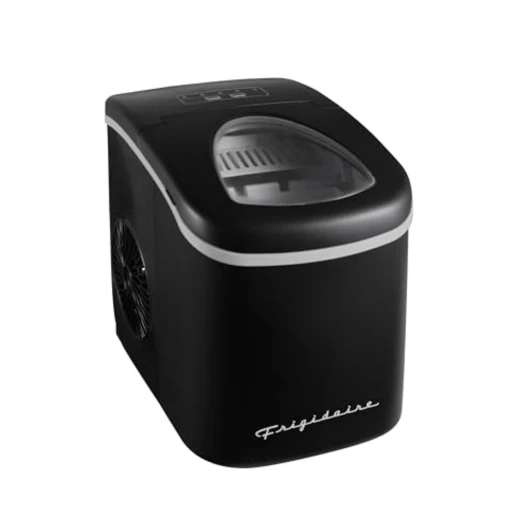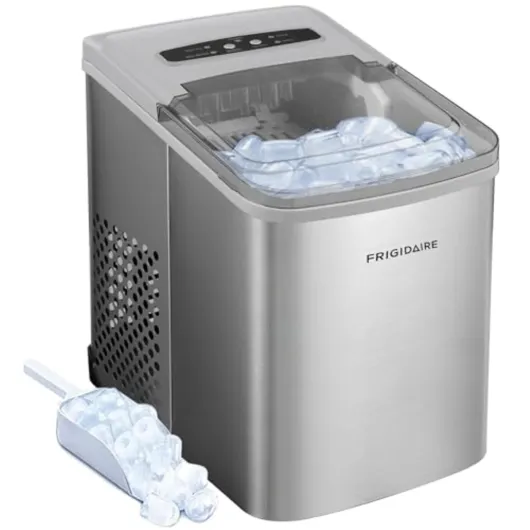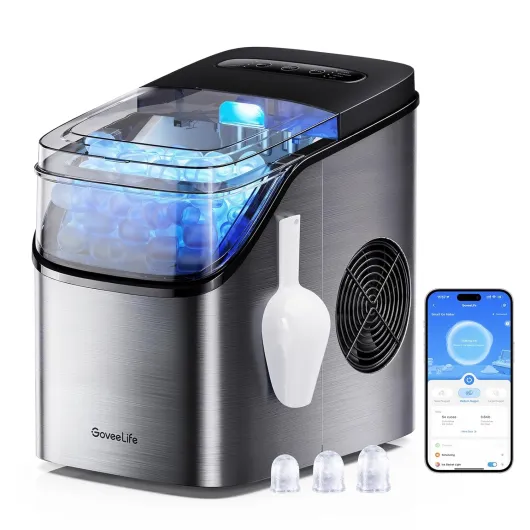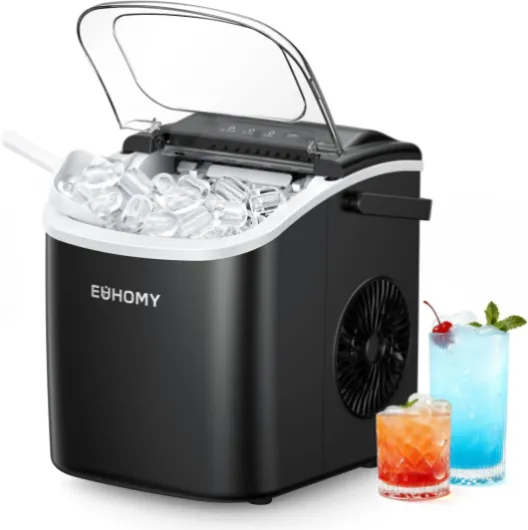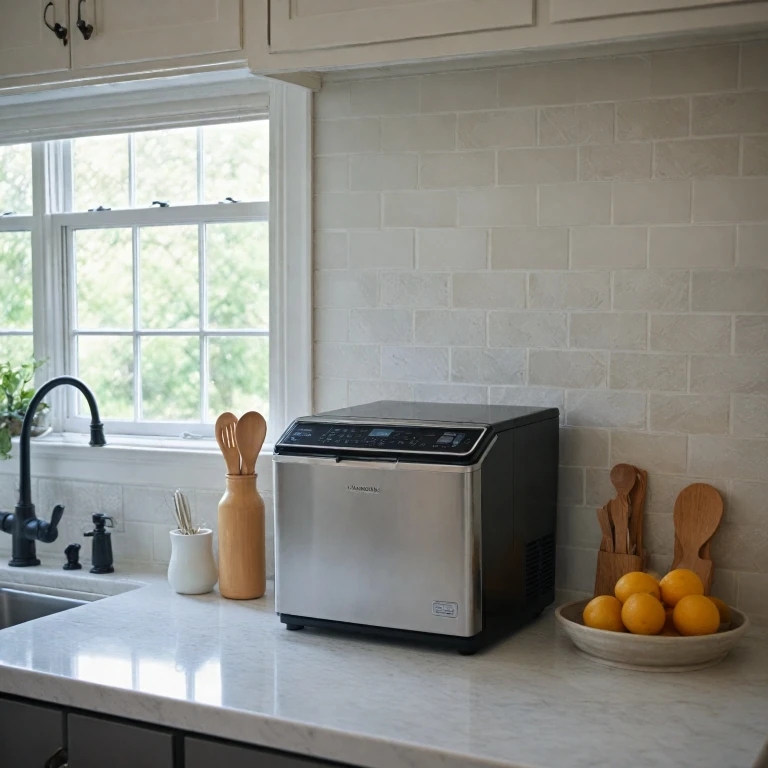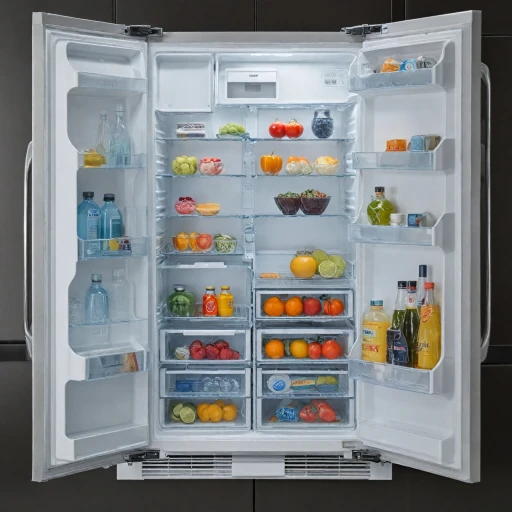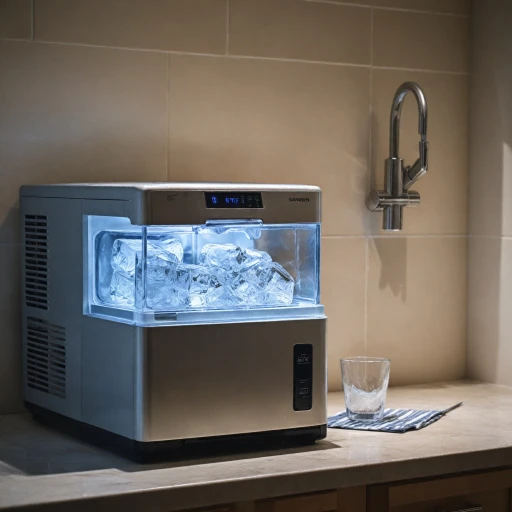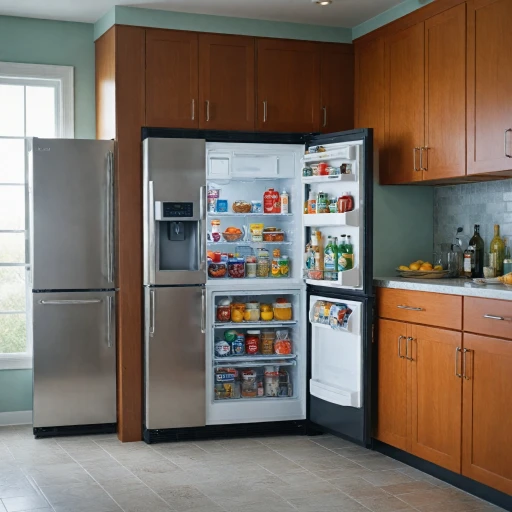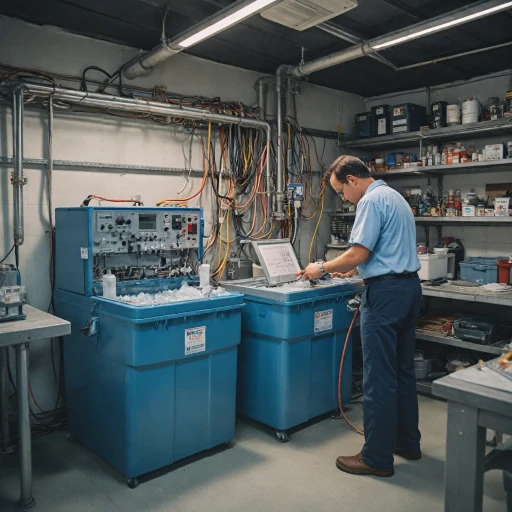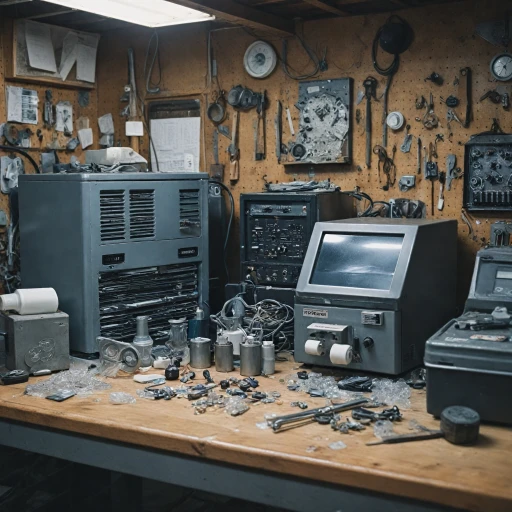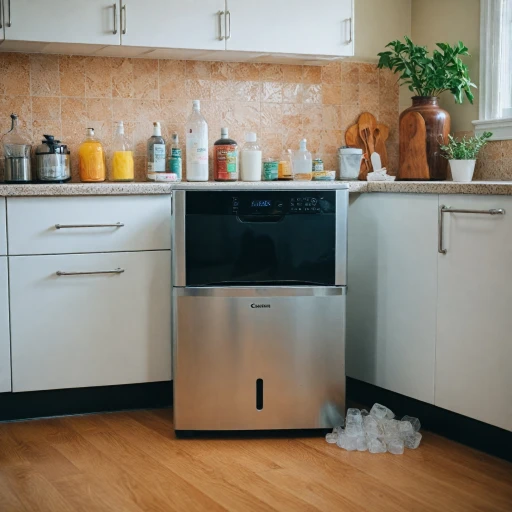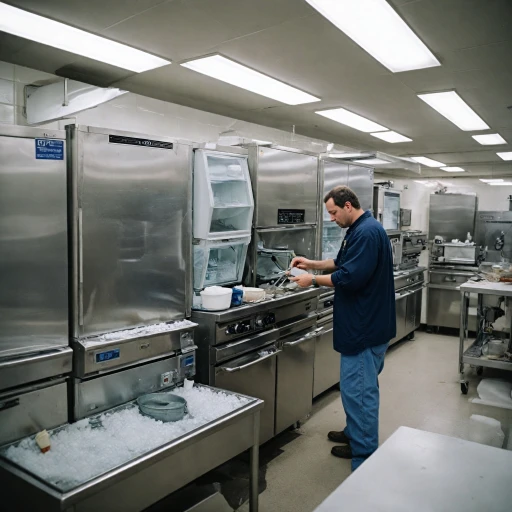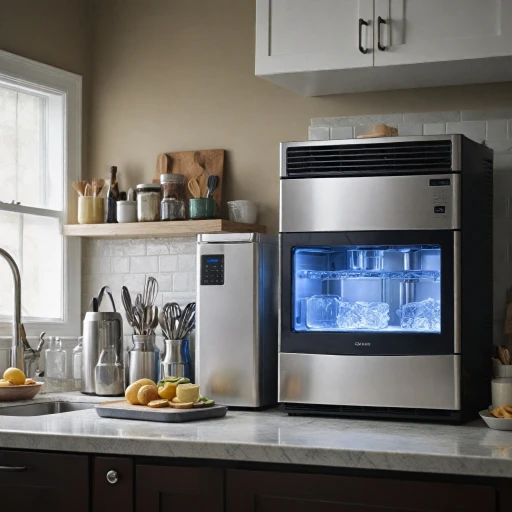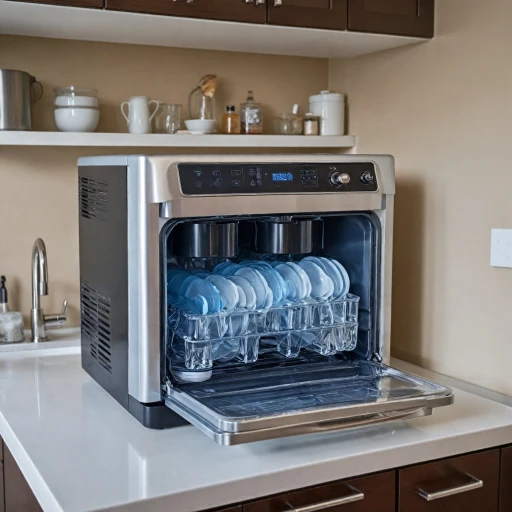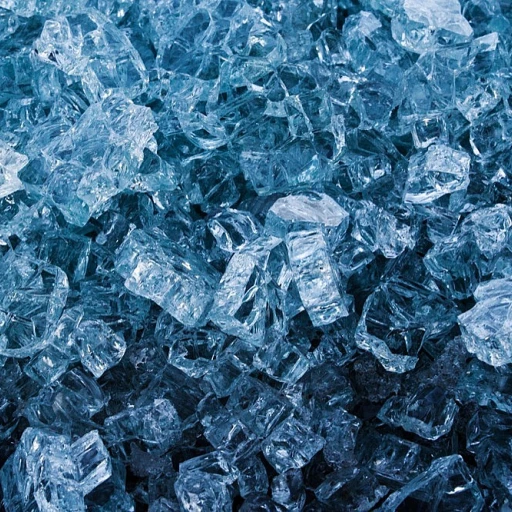
Understanding Your Frigidaire Ice Maker
Getting Familiar with Your Ice Maker's Operation
Understanding how your Frigidaire ice maker functions is crucial to diagnosing and resolving any issues that may pop up. This popular appliance is designed to make ice production a breeze, turning water from your supply line into a constant stream of ready-to-use ice cubes. The primary components include the water inlet, fill valve, control board, and ice dispenser.
Your ice maker has a dedicated water supply line that feeds into the refrigerator, filling the ice tray automatically. It's vital to ensure the water filter is working efficiently, as any disruptions here can lead to common issues in ice production and ice maker malfunctions.
Behind the scenes, the control board acts as the brain, regulating the temperature and coordinating the operation of various parts to ensure a steady supply of ice in the ice bin. A thorough understanding of these intricacies can be incredibly helpful in diagnosing any problems you may encounter.
Upon addressing your concerns, learn more about common issues with Frigidaire ice makers, guiding you to identify and address problems such as fluctuating freezer temperatures and valve malfunctions.
Identifying Common Problems
Recognize the Issues Commonly Faced
Understanding the typical problems that can arise with your Frigidaire ice maker can help you resolve them more efficiently. Let’s delve into some common issues you might encounter with this appliance:
- Ice Not Being Produced: A regularly occurring issue where the ice maker fails to generate ice. This can be due to a range of factors like a clogged water filter, an improperly set freezer temperature, or a malfunctioning control board.
- Water Leaks: Ensuring that the water inlet valve and the fill parts are securely placed can prevent unwanted water leakage which can lead to further damage.
- Ice Dispenser Problems: Sometimes the dispenser may not release ice. This can be related to an obstructed control arm or issues with the appliance's control board.
- Frozen Water Inlet: The water inlet might freeze if the temperature setting on the refrigerator freezer is too low, preventing water from reaching the ice maker.
- Ice with Unpleasant Taste/Odor: Often caused by an old water filter that needs replacing. Check on your refrigerator’s filter to ensure the quality of water ice.
- Temperature Control Issues: If the freezer temperature is not set correctly, it might impact the ice production efficiency. Make sure that the freezer is at the recommended setting.
- Intermittent Operation: This could indicate a more complex problem with the main control board or internal parts that may require a professional's assessment.
If you're encountering problems beyond these or need more in-depth effective solutions for repair, it's prudent to seek further guidance or consider consulting a professional for a repair job.
Step-by-Step Troubleshooting Guide
Addressing Malfunctions Step by Step
Experiencing issues with your Frigidaire ice maker can be frustrating, but many problems have straightforward solutions. Here's a guide to help diagnose and address the problems you might face with your ice-producing appliance.
Inspect the Water Supply
First, ensure the water supply to your Frigidaire refrigerator is intact. Poor water pressure or a disconnected inlet valve can prevent your ice maker from functioning correctly. Check that the water line is securely attached and the water inlet valve is receiving adequate water flow.
Check the Temperature Settings
Your refrigerator's freezer temperature settings play a vital role in ice production. Set the temperature to around 0°F (-18°C) to ensure optimal ice-making conditions. If your freezer is too warm, it may delay ice production or stop the ice maker from working altogether.
Inspect the Ice Dispenser and Controls
Sometimes, the issue lies within the ice dispenser or control settings. Check that the ice bin is correctly placed and not overfilled, which could obstruct the control arm. Also, inspect the main control board for any signs of malfunction, as improper settings can hinder ice production.
Examine the Water Filter
If your ice maker isn’t working, a clogged water filter may be the culprit. Replace the filter if it’s been over six months since the last change. A clean filter ensures proper water flow and quality ice production.
Analyze the Ice Maker Parts
Finally, closely inspect the ice maker parts. Components such as the fill valve and ice mold could require attention. Adequate address of these can often be resolved with a quick repair or by ordering replacement parts.
For thorough cleaning techniques that might solve your problem, explore our effective cleaning solutions guide.
When to Call a Professional
Seeking Professional Repair Services
When addressing issues with your Frigidaire ice maker, there might be occasions when professional help is necessary. Here are some key moments to consider calling an appliance repair specialist:- Persistent Problems: After following a troubleshooting guide, if your ice maker isn't working or if the issues reoccur frequently, it might be time to consult a professional. The problem could be rooted in complex internal components, such as the control board or temperature sensors.
- Faulty Parts: Components like the water inlet valve, control arm, or main control board may need replacement. These parts require specialized knowledge to diagnose and install correctly, to ensure your refrigerator ice maker's longevity and efficiency.
- Complex Component Failures: Should you encounter problems with the fridge's water supply, inlet valve, or fill pressure, a repair professional can accurately assess the issues. They can check and resolve problems related to the freezer temperature, refrigerator freezer operations, and the water filter system.
- Electrical or Plumbing Expertise: Situations involving electrical wiring or water connections, including faulty water dispenser lines, demand professional expertise to avoid harm or further damage to your Frigidaire refrigerator.
Maintenance Tips for Longevity
Maximizing the Lifespan of Your Ice Maker
To ensure your Frigidaire ice maker continues producing ice efficiently, proper maintenance is crucial. Here are some essential tips to help extend the life of your appliance and keep it functioning optimally:- Regular Cleaning: Clean the ice bin and water dispenser regularly to prevent build-up of minerals and impurities. This not only improves ice quality but also prolongs the lifespan of your ice maker.
- Check the Water Filter: Replace the water filter as per the manufacturer's recommendations. A clogged water filter can restrict water flow, affecting ice production and water quality.
- Monitor the Inlet Valve: Ensure the water inlet valve is free from debris and functioning correctly. Any obstruction can hinder water supply to your ice maker, impacting its performance.
- Inspect the Control Board: Regular inspections of the control board can help detect potential issues early. The control board is critical for the machine's operation, and maintaining it can prevent unexpected failures.
- Temperature Settings: Frequently check the freezer temperature. If it's too high, it may hamper ice production. Optimal temperature helps in maintaining a steady ice-making process.
- Manual Testing: Periodically, manually test the control arm and other parts of the ice maker. This helps in identifying any mechanical problems early on, preventing larger issues.
- Professional Service: Schedule regular maintenance with a professional. A certified technician can provide a thorough inspection, ensuring all components are in good working order and addressing potential repairs before they become significant problems.
Frequently Asked Questions
Questions You Might Have About Your Ice Maker
-
Why is my Frigidaire ice maker not producing ice?
If your ice maker isn’t making ice, first check the water supply to ensure there’s no blockage. It's important to see if the water inlet valve and water filter are both clean and functional. Inspect the freezer temperature as well, since it should be at the optimal level for ice production. -
How do I know if the inlet valve is the issue?
Listen for any unusual sounds that might indicate an issue. A malfunctioning water inlet valve can often be identified by checking if the water flow to the ice maker is interrupted or completely absent. Sometimes, manual testing of the valve is necessary. -
What could cause irregular ice size and shape?
This is commonly caused by a problem with the water fill level or pressure. Evaluate the control board and adjust settings if the ice maker's parts aren’t working in harmony. -
Can I replace the water filter myself?
Yes, replacing the water filter is typically straightforward and can often solve issues with water quality or ice maker efficiency. Follow the manufacturer’s instructions for your specific model. -
Is it okay to leave the ice maker always on?
While you can leave your appliance on, ensure that the maker's working environment is optimal. Regular maintenance as discussed can prolong the lifespan of your ice maker and refrigerator. -
When should I consider professional help?
If after troubleshooting, the ice maker issue persists, contacting a professional for inspection and repair is recommended. They can efficiently diagnose problems like control arm malfunctions or complicated freezer temperature adjustments.
-logo-retina.jpg)
